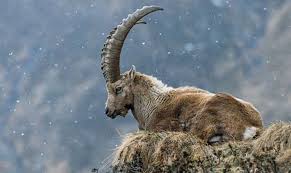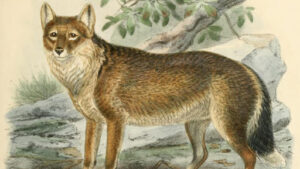20 List Of extinct animals in the last 100 years, Lost Animals
While conservationists have managed to save a number of rare and precious creatures from going extinct, not all have been saved.
With Earth Day upon us, here’s a look at 20 of the animals we’ve lost in the last century.
Heath hens, a prairie chicken subspecies, rapidly vanished from the East Coast mainland during the mid 1800s, but survived in a sanctuary in Martha’s Vineyard, Massachusetts, until the last perished in 1932.
The thylacine, or Tasmanian tiger, was a dog-like marsupial with the head of a wolf. The shy Australian animals died after only a century of European settlement. Despite the world’s last captive thylacine dying in 1936, the secretive animal wasn’t declared extinct until 1986.

More recently in 2007 the Baiji dolphin, a rare river dolphin native to China, was presumed extinct. The last documented sighting of the baiji dolphin occurred in 2002.
And just in the last decade there have been many more animals that disappeared from the planet, despite efforts by scientists.
20 List Of extinct animals in the last 100 years
- The Northern White Rhinoceros
- The Spix Macaw
- The Thylacine
- The Passenger Pigeon
- The Quagga
- The Pyrenean Ibex
- The Golden Toad
- Zanzibar Leopard
- Po’ouli
- Madeiran Large White
- Carolina Parakeet
- West African Black Rhino
- Tecopa Pupfish
- Falkland Islands Wolf
- Javan Tiger
- Round Island Burrowing Boa
- Pinta Island Tortoise
- Dutch Alcon Blue Butterfly
- Schomburgk’s Deer
- The Dodo
Look below for animals that extinct within the past century, including many within your own lifespan:
1. The Northern White Rhinoceros

The last two living northern white rhino’s in existence happen to both be female as the last male died in March of 2018. Sudan, the 45-year old male was under armed guard at Kenya’s Ol Pejeta Conservancy when he passed away from old age and an infection.
The two females are also unable to give birth, making the likelihood of introducing a new generation of the species highly unlikely. Scientists are working on using harvested sex cells and IVF to bring forth a lab-created northern white rhino.
Cause of Extinction: poaching has decimated this population and loss of habitat also helped drive the rhino to the brink of extinction.
2. The Spix Macaw

Thought to be extinct in the wild, the Spix Macaw currently exists in captivity with their numbers in the dismally low 60-80 range. The bird is also referred to as Little Blue Macaw because they’re known for their vibrant blue feathers.
Cause of Extinction: the Spix Macaw went extinct in the wild due to habitat destruction, illegal trapping and trade.
3. The Thylacine

The Thylacine, a carnivore also referred to as the Tasmanian tiger and Tasmanian wolf, was a (mostly) nocturnal marsupial that preyed on rodents and kangaroos.
Although Thylacine’s looked fierce, they were actually quite timid and, according to Live Science, “could be captured without a fight.”
Reports of Thylacine sightings have been so frequent in the past century that it sparked an investigation as to the status of their existence.
Cause of Extinction: it is believed that Dingo populations threatened the Thylacine into extinction in addition to over-hunting from humans.
4. The Passenger Pigeon

Estimates say that the passenger pigeon population numbered in the millions—and possibly billions—when the first Europeans began settling in America.
MentalFloss reports that Wisconsin was home to largest known nesting site in the late 1800s.
Cause of Extinction: humans hunted the pigeon and consumed it to the point of extinction with the last known bird dying in captivity in the Cincinnati Zoo in 1914.
5. The Quagga

The Quagga was native to South Africa and went extinct in the late 19th century.
For a long time, the quagga was thought to be its own species before it was discovered that it was closely related to the Plains Zebra and was, in fact, a subspecies of the zebra.
Quagga’s were interesting in appearance quite literally looking the mashup between two animals—a zebra in the front thanks to the famous zebra stripes adorning this part of its body, and a horse in the rear due to the lack of stripes in this area.
Scientists are trying to resurrect the quagga and have seen some success via reverse engineering by selectively breeding zebras (who carry quagga genes).
Cause of Extinction: humans hunted the quagga to extinction.
6. The Pyrenean Ibex

The Pyrenean Ibex officially went extinct in 2000, before being ‘resurrected’ nearly a decade later in 2009.
Scientists used DNA taken from preserved epidermal samples to create a clone of a female Pyrenean Ibex, which was able to make it through gestation and even birth before dying shortly after of lung deformities.
Cause of Extinction: extensive hunting during the 19th century.
7. The Golden Toad

The golden toad is not the only species to disappear in the past 40 years, but it just might be the brightest.
The small toad was last seen in 1989 in a Costa Rican rainforest before being declared extinct in 1994. It is believed that Chytridiomycosis, a fatal skin disease, decimated this toad population that was already vulnerable thanks to what Science is calling a “limited habitat and small population.”
Cause of Extinction: pollution, global warming, and chytrid skin infections led to the extinction of this species.
8. Zanzibar Leopard

One of several subspecies of leopard, the Zanzibar leopard made its home on the Zanzibar archipelago of Tanzania. It’s still unclear whether this large cat is technically extinct—there are occasional unconfirmed sightings.
Cause of Extinction: the leopard went extinct thanks to the belief that these animals were kept by witches; for this reason, locals aggressively hunted them.
It didn’t help that the government was in on the campaign to exterminate the creatures. In the mid-’90s there was a short-lived conservation effort but it was deemed too little, too late.
Update: In 2018, Animal Planet released footage of what it identified as a Zanzibar Leopard, but those claims have yet to be confirmed.
9. Po’ouli

A native of Maui, Hawaii, the Po’ouli, or Black-faced Honeycreeper, was only discovered in the 1970s. The birds inhabited the southwestern slope of Haleakala volcano. But the population declined rapidly, and by 1997 there were only three known Po’ouli left.
Efforts to mate the remaining birds failed and the species was formally declared extinct seven years later.
Cause of Extinction: habitat loss, along with disease, predators and a decline in its food source—native tree snails—are all seen as reasons for the bird’s demise.
10. Madeiran Large White

The stunning Madeiran Large White butterfly was found in the valleys of the Laurisilva forests on Portugal’s Madeira Islands. The butterfly’s closest relative, the Large White, is common across Europe, Africa and Asia.
Cause of Extinction: loss of habitat due to construction as well as pollution from agricultural fertilizers are two major causes of the species’ decline. While it hasn’t been officially declared extinct, the butterfly hasn’t been seen for decades.
11. Carolina Parakeet

The Carolina parakeet was the only bird of its kind native to the eastern portion of the U.S.
The last Carolina parakeet died at the Cincinnati Zoo in February of 1918 soon after his mate, Lady Jane, passed.
Cause of Extinction: the Smithsonian notes that while a specific reason doesn’t explain the parakeet’s extinction, it’s likely that deforestation and disease are what offed the brightly colored birds. It also didn’t help that their feathers were coveted fashion fixtures for women’s hats.
12. West African Black Rhino

The majestic West African black rhino was declared extinct in 2006, after conservationists failed to find any in their last remaining habitat in Cameroon. The West African black rhino was one of four subspecies of rhinoceros.
Cause of Extinction: poachers hunted the rhino for its horn, which is believed by some in Yemen and China to possess aphrodisiacal powers, leading to their extinction.
13. Tecopa Pupfish

The Tecopa pupfish, a native of the hot springs of the Mojave Desert, has the distinction of being the first animal declared extinct under the provisions of the Endangered Species Act of 1973. The pupfish’s decline was precipitated when its natural habitat was encroached upon by developers.
Cause of Extinction: the destruction of their natural habitat led to the extinction of this species.
14. Falkland Islands Wolf

The Falkland Islands wolf went extinct in the late 1800s and was also known as the Antarctic wolf and the Falkland Islands fox.
These wolves were native to the Falklands off of Argentina and were quite isolated from the world until humans reached the islands and hunted them (kind of easily because the wolves were so friendly).
Scientists believe these wolves fed on penguins and other ground-nesting birds in addition to seal pups.
Cause of Extinction: hunting.
15. Javan Tiger

Similar in appearance to the Sumatran tiger, the Javan tiger was native to the Indonesian island of Java. In the 1800s they were so common they were considered pests by island natives, but as the island was developed their population dwindled. By the 1950s, only 20 tigers remained.
Cause of Extinction: loss of habitat and agricultural development led to severe population decline. Conservation efforts in the 1940s and ’50s were unsuccessful due to a lack of adequate land and planning.
16. Round Island Burrowing Boa

Native to Round Island, a tiny island off the coast of Mauritius, the Round Island Burrowing Boa preferred to live on the topsoil layers of volcanic slopes. It was once found on several other islands around Mauritius, but its population had dwindled by the 1940s, and it could only be found on Round Island after 1949. It was last seen in 1975.
Cause of Extinction: the introduction of non-native species of rabbits and goats to the island destroyed vegetation and upset the boa’s habitat, leading to its eventual extinction.
17. Pinta Island Tortoise

The Pinta Island tortoise was around when Darwin visited the Galapagos in 1835. Sadly, a male named Lonesome George (pictured), was the last purebred of this subspecies and passed in 2015.
Cause of Extinction: goats that humans introduced to Pinta Island who destroyed their habitats, rats (also introduced by humans) who preyed on young tortoises, and humans killing the tortoises for their meat.
18. Dutch Alcon Blue Butterfly

This Dutch butterfly — a subspecies of the Alcon Blue — was found mainly in the grasslands of The Netherlands. While closely related species (pictured here) still exist in parts of Europe and Asia, the last Dutch Alcon Blue was seen in the wild in 1979.
Cause of Extinction: increases in farming and building had a negative impact on the Alcon Blue’s habitat and caused it to lose its main food source.
19. Schomburgk’s Deer

Schomburgk’s deer was native to Thailand and was named after German-born explorer, Sir Robert H. Schomburgk, who was knighted in 1844.
Some scientists believe that there may still be a few of these deer in the wild even though they were officially declared extinct in 2006 with the last known deer reportedly killed in captivity in 1938.
Cause of Extinction: Besides humans, Schomburgk’s deer were hunted by native tigers and leopards. Today, we only know of one mounted deer head which resides in Paris’ Muséum National d’Histoire Naturelle.
20. The Dodo

The Dodo was a flightless bird native to Mauritius whose population began dwindling and eventually became extinct over the short course of a century when sailors began arriving on the East African island nation.
The last of the Dodos were seen in the 1660s and because there really wasn’t an emphasis on specimen preservation, many of the remaining fossils were lost or destroyed.
Even though the Dodo went extinct more than 150 years ago, their story is important. People didn’t believe that God would take away a creature’s existence after having gone through the trouble of creating them, so no one was truly alarmed at their disappearance. This led people to believe that there were more Dodos tucked away somewhere in nature and so, specimens weren’t handled as carefully as they should have been.
In fact, Dodo specimen damage and loss was common in the 17th and 18th centuries.
Cause of Extinction: popular belief has sailors hunting and eating the Dodo to the point of extinction, but it’s more likely that the rats (and other animals) the sailors brought with them caused the Dodo’s decline. The BBC reports that rats likely ate Dodo eggs and other animals outcompeted the bird for food sources.
Author Profile
- I am the owner of the blog readree.com. My love for technology began at a young age, and I have been exploring every nook and cranny of it for the past eight years. In that time, I have learned an immense amount about the internet world, technology, Smartphones, Computers, Funny Tricks, and how to use the internet to solve common problems faced by people in their day-to-day lives. Through this blog, I aim to share all that I have learned with my readers so that they can benefit from it too. Connect with me : Sabinbaniya2002@gmail.com



